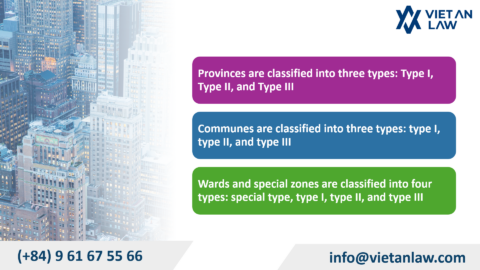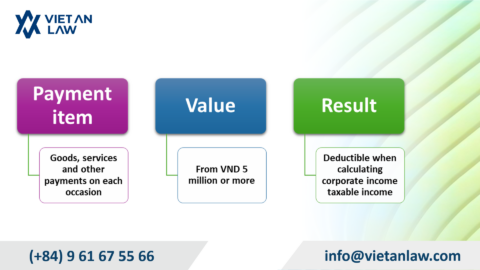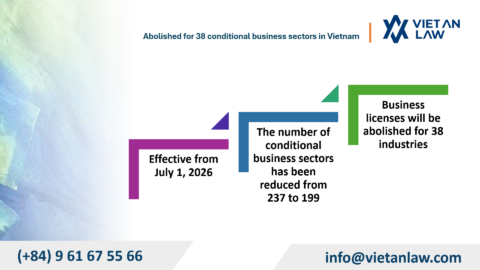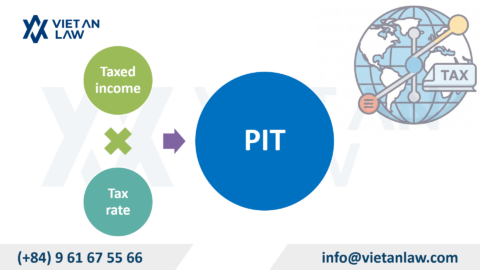On 18th January 2024, the Land Law 2024 was passed by the XV National Assembly at the 5th extraordinary session. The Land Law 2024 will replace the Land Law 2013 and take effect from 01 January 2025, except for the provisions under Article 190 and Article 248, which shall take effect from 01 April 2024. Pursuant to the Land Law 2024, as of 01 January 2026, the land price regime shall be determined based on actual market values. This represents a major change compared to the Land Law 2013, under which land prices were determined according to the Government’s pricing framework. Accordingly, from 2026, the provinces and centrally-run cities shall issue annual land price regimes, detailed for each area and each land plot (structured by specific area and location). The increase in land prices will affect cost obligations such as land use fees, land rental fees, and registration fees. In the following article, Viet An Law Firm provides clients with an overview of legal advice on the new land price regime from 2026 in Vietnam.
Table of contents
Under the Land Law 2024, the land price regime is an important State management tool in the field of land, defined as a compilation of land prices prescribed for each type of land in specific geographical locations and areas. This serves as the legal basis for the State to perform financial obligations and exercise management relating to land. According to current Vietnamese legislation, the land price regime is prepared by the Provincial People’s Committee and submitted to the People’s Council of the same level for approval before promulgation. The land price regime must be publicly announced and is the basis for the calculation of various fees, charges, taxes, land use fees, land rental fees, and other financial obligations of land users to the State. With the change introduced under the Land Law 2024, from 01 January 2026, the land price regime shall be developed on the principle of approximation to market prices, with the expectation of enhancing transparency and fairness in land management and use.
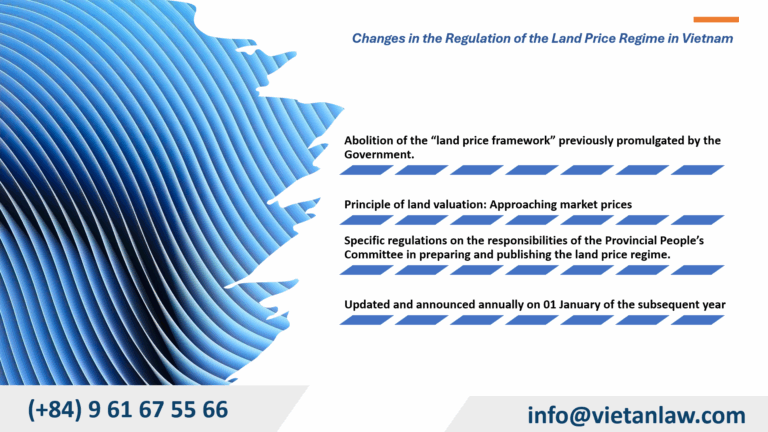
In line with the spirit of Resolution No. 18-NQ/TW dated 16th June, the Land Law 2024 provides that the annual land price regime shall be issued to ensure close reflection of actual market developments and to expand the scope of application. From 1st January 2026, the land price regime shall be prepared depending on each area or location. For areas with cadastral digital maps and land price databases, standard price regimes shall be developed for each land plot. To ensure feasibility after abolishing the land price framework and to provide mechanisms and methods for land valuation according to market principles as directed in Resolution No. 18, the current land price regime will continue to be applied until the end of 2025. Under this provision, localities have sufficient time to prepare and issue the new land price regime from the effective date of the Law until the end of 2025.
Thus, it can be seen that the regulations on land valuation have been revised to ensure the method of determining prices is market-based, transparent, and independent in valuation, appraisal, and decision-making.
According to Clause 1 Article 159 of the Land Law 2024, from 01 January 2026, the land price regime shall be applied when:
Accordingly, under this new regulation, the land price regime will serve as the basis for determining numerous financial obligations and values relating to land. Specifically, the land price regime will be applied when calculating land use fees, land rental fees, annual land use taxes, and personal income tax from land transfer. Additionally, fees for land management and use, as well as fines for administrative violations or compensation payable to the State upon land recovery, will also be based on this price regime.
A notable point and significant addition compared to the Land Law 2013 is that the Land Law 2024 has expanded the scope of application of the land price regime. From 2026, the land price regime will be used for calculating land rental fees (a new provision compared to prior regulations) and, importantly, for determining starting prices for auctions of land use rights. This change is expected to bring greater transparency and fairness in land valuation and management, reducing the disparity between State-prescribed and market prices, thereby laying a solid foundation for revenue collection and socio-economic development.
This represents a golden opportunity to increase State budget revenue from land transparently and efficiently, as amounts such as land use fees, land rental fees, land use tax, and income tax from land transfers will be calculated more closely to actual market values. This change also contributes significantly to greater transparency in land management, limiting negative practices and improving land use efficiency.
Especially those operating in the real estate sector, higher input land prices will directly increase investment costs and may affect project profitability. This requires enterprises to possess stronger financial capacity and to carefully calculate investment efficiency. However, transparency in land prices will reduce legal risks and create a fairer and more attractive investment environment for long-term investors, especially FDI capital.
On the one hand, they will face higher financial obligations when performing land-related procedures such as the issuance of land use right certificates or the conversion of land use purposes. On the other hand, this is a significant opportunity for citizens to receive more adequate compensation when land is recovered by the State, thereby contributing to livelihood stability post-resettlement, which makes land transactions more transparent and fair.
The above constitutes the analysis regarding the new land price regime from 2026 in Vietnam. Should clients have any questions or require legal advice on relevant regulations, please contact Viet An Law Firm for the best support!
